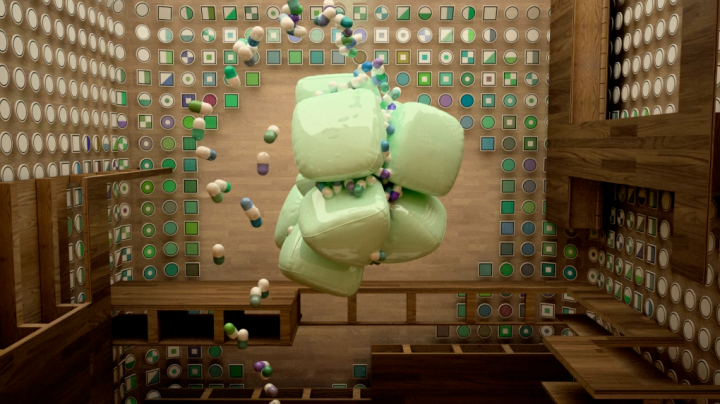
In the video featured on the page they show a cube and a sphere being controlled externally by Jitter - with the hues being altered, movement being applied, and even video with various blending modes being used as live textures. This set up made me wonder whether the same thing was possible in Blender - the free 3D modelling software, with a built in game engine.
This game (GooBall) is running under the Unity game engine as shown in the video.
It would be cool to see environments like these being controlled in realtime through alternative controllers - i.e. not gamepads, which brings me onto my next point...
Awaiting future release is the Max for live extension - allowing MAX/MSP to connect directly with Ableton Live - music production and performance software. This means that with this link and the link into a game engine, visuals set within 3D environments could truly be synced with music; whether it is in the form of playing a keyboard live and things happening within the engine - as you would expect in a videogame from pressing buttons, or via precomposed MIDI sequences that are performed as per a common Ableton setup. The precomposed MIDI would allow for patterns of visuals to be stored for instant triggering.
On top of this, the live game engine feed could be run through another program as an input - perhaps in VDMX somehow. Then post-effects could be applied to the source to enhance the image.
The possible outcomes for this kind of set-up would be endless. With the level of detail going into today's games and the kind of work beng produced in the motion graphic and animation world - making something that runs in realtime would be fantastic for events and installations. Music events could have live visuals that were designed specifically for the artist and sync specifically to their music. That's not to say that this isn't happening already - as there certainly are artsists out there with accompanying visuals by top design agencies - but my point is that showing them through a game engine that links directly to Ableton is possibly the most straight-forward, and best synced set you can have, and being a game engine, allows for visuals with a lot more depth than a set of pre-rendered clips. For instance, imagine that an environment like this...
was created in a game engine - and that several of the different components were hooked up to different parts of a song like a drum pattern or a bassline. Like I said, the possibilities would be endless. And beautiful.



No comments:
Post a Comment